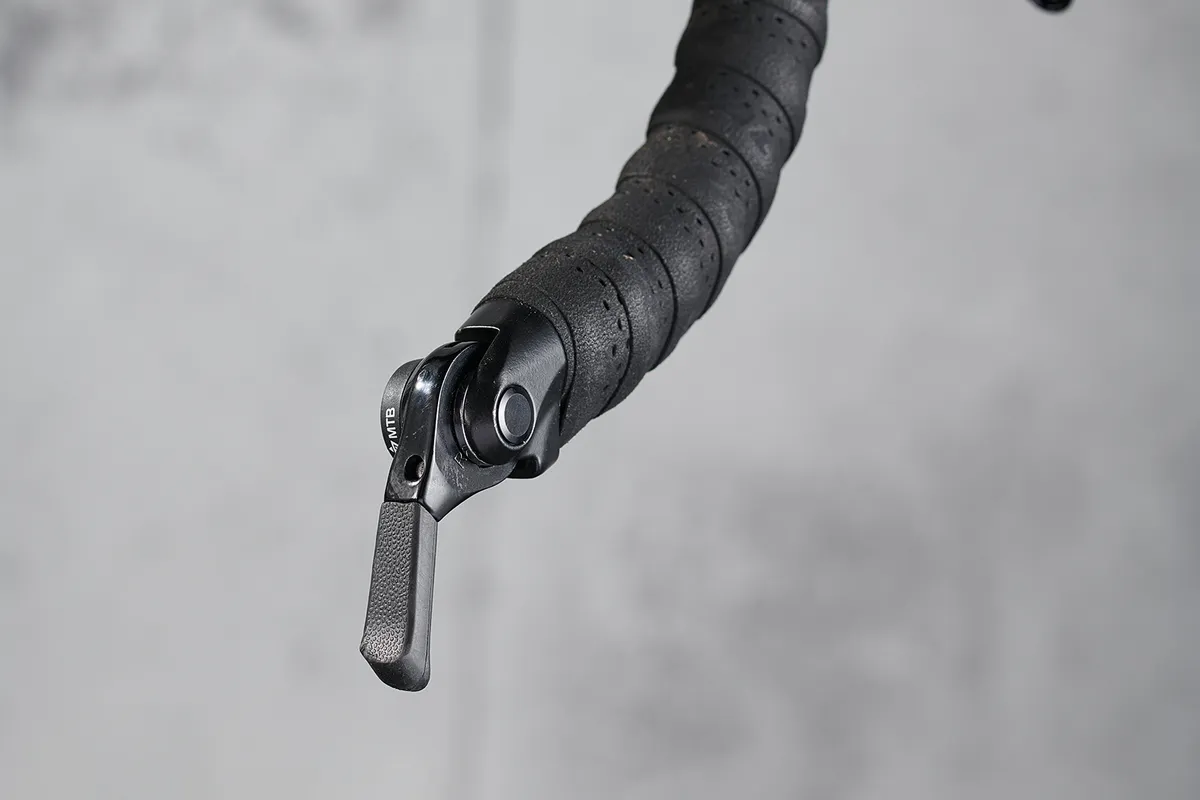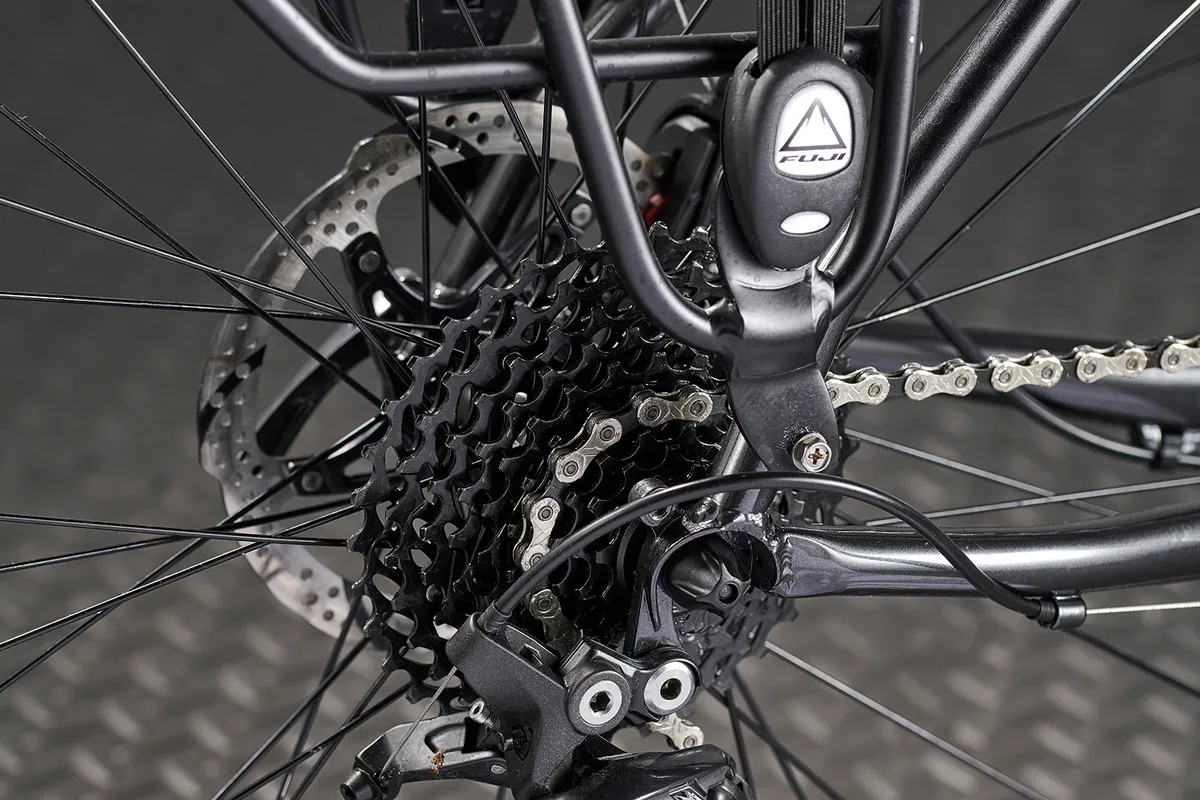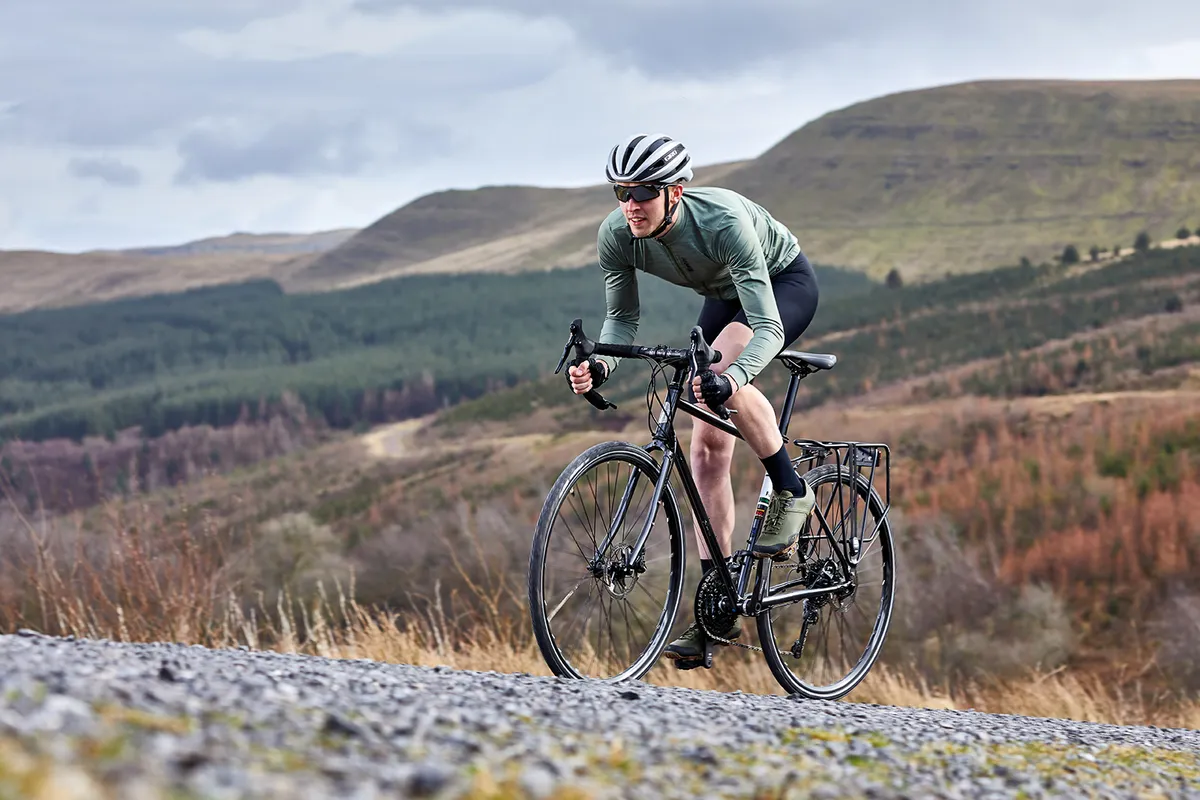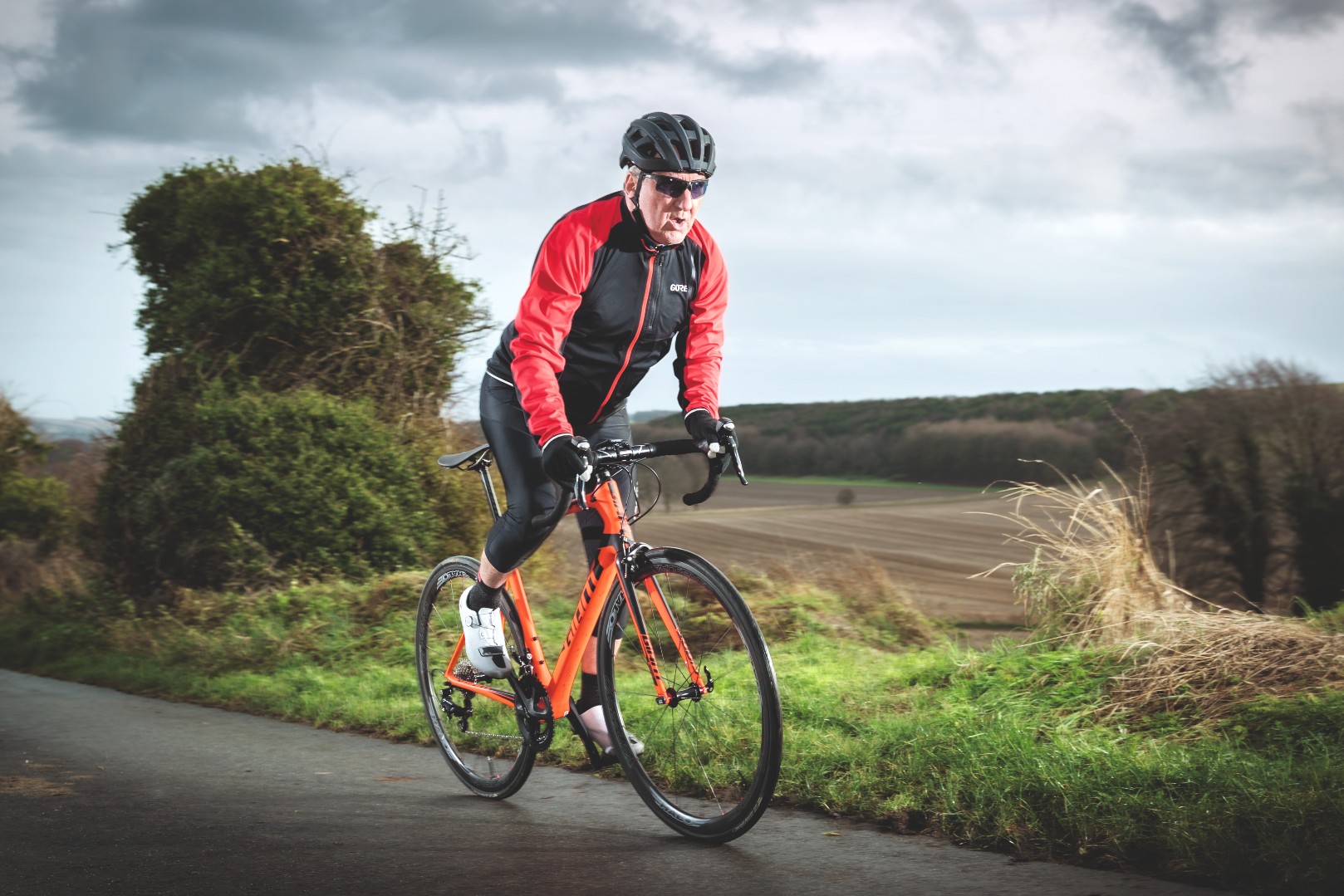The Fuji may be an entry-level machine but it’s ready for touring straight out of the box. And while it’s a steel frame and fork, these are accompanied by cable-actuated disc brakes, so it’s not all retro.
The frame is made from Reynolds 520 steel, which is essentially the replacement for Reynolds’ long-standing 531. The latter is a manganese-molybdenum steel, while 520 is chrome-molybdenum – but their mechanical properties are very similar.
The advantage that 520 has is that it can be TIG-welded, rather than lugged (with socket-like sleeves); lugged frames these days are now pretty much the preserve of bespoke bike builders.
Reynolds 525 and 520 are mechanically identical except that 520 is made in Taiwan under licence rather than in Birmingham.
Bar-end shifters are rarely seen in mainstream cycling these days (save for time trialling, if that can be construed as ‘mainstream’) but they’re still a sound choice for cycle-touring.
If you break your STI levers with their myriad little parts, DIY repairs could prove tricky, and even if the indexing goes haywire on bar-end shifters you can use them in the ‘retro’ friction mode.

Fuji combines Microshift’s 10-speed bar-end shifters, TRP’s RRL brake levers and an all-Shimano drivetrain.
The Deore triple 48/38/26t chainrings and 11-36 SRAM cassette provide a fantastic range of gears, with the 26x36 bailout gear especially welcome. Fuji even manages an eye-catching XT rear mech, which is, frankly, unusual at this price.
It was my first time using the RRL levers and not only did I find them well-shaped but the small hoods provide very effective handholds. The flattened bar tops also proved very appealing.
The TRP Spyre brakes are cable-actuated, rather than hydraulic, but they have a lot of the same qualities even if they require more effort from your hands: they’ve easily enough power, a smooth progression and decent control.
Being purely mechanical, I reckon they’d be easier to fettle in the back of beyond, and I’d be less concerned about them being damaged in transit than a hydraulic system.

One crucial but often overlooked advantage of disc brakes over rim brakes is that of vastly improved rim life – discs don’t grind muck, grit and metal into the thin metal rim every time you brake. If you’ve ever had a rim explode on you – I have once – this increased longevity is very reassuring, especially if you’re a long way from a bike shop.
The tyres are a somewhat stiff-feeling set of Randonneurs from Vittoria. They have a thick layer of puncture protection in the tread and a very effective reflective layer, but the bottom line is that they’re a budget rubber and, while protection is undoubtedly important, I really would have preferred something with a slightly livelier feel.
They actually come into their own more when the bike is heavily loaded, where their size contributes to a smooth, comfortable ride with the familiar semi-upright riding position delivered by the tall head tube and chainstays.
Comfort and stability are the watchwords for the best touring bikes and the Fuji has both. Its touring credentials are further confirmed by its three sets of bottle bosses and even a pump peg and chain hanger.

If you’re looking for a full-on touring bike for extended trips both home and abroad, Fuji’s Road Disc should, at the very least, be on your radar. Well-chosen kit on a simple, semi-compact frame.
Let’s be frank, the Fuji Touring Disc is never going to be a lightweight bike, but it would undoubtedly make a tough commuter bike that you could load up with heavy shopping bags, and if you strip off the rack and fit slicker, narrower tyres it would be perfectly suitable for comfortable days out as well as sportives.
Fuji Touring Disc geometry
- Seat angle: 73.6 degrees
- Head angle: 71.5 degrees
- Chainstay: 44.7cm
- Seat tube: 47cm
- Top tube: 53.8cm
- Head tube: 14cm
- Fork offset: 4.9cm
- Trail: 6.6cm
- Bottom bracket drop: 7.8cm
- Bottom bracket height: 27.4cm
- Wheelbase: 1,052mm
- Stack: 58.2cm
- Reach: 36.7cm
How we tested
This bike was tested against four other top touring bikes that have been designed to let you unlock your inner adventurer.
Other bikes on test:
- Cinelli Hobootleg Easy Travel
- Ridgeback Panorama
- Trek 920
- Thorn Club Tour MK5
Product
| Brand | Fuji |
| Price | A$1999.00, £1100.00 |
| Weight | 12.93kg |
Features
| Fork | Chromoly steel |
| Stem | Oval Concepts 313 |
| Chain | KMC X10 EL |
| Frame | Reynolds 520 chromoly steel |
| Tyres | 35mm Vittoria Randonneur |
| Brakes | TRP Spyre C mechanical disc, 160mm rotors |
| Cranks | Shimano Deore 48/36/26 |
| Saddle | Oval Concepts 344 |
| Wheels | Vera Terra DPD18 Disc, double wall, 36/36 spokes |
| Headset | Oval Concepts |
| Shifter | Microshift bar-end |
| Cassette | SRAM 11-36 |
| Seatpost | Oval Concepts 27.2mm |
| Handlebar | Oval Concepts 310 Ergo |
| Bottom bracket | Shimano BB-SM52 |
| Available sizes | 49, 52, 54, 56, 58, 61cm |
| Rear derailleur | Shimano XT rear |
| Front derailleur | Shimano Deore |
